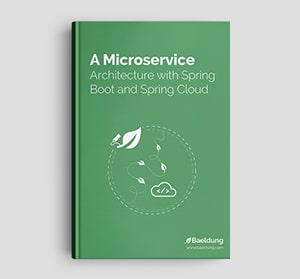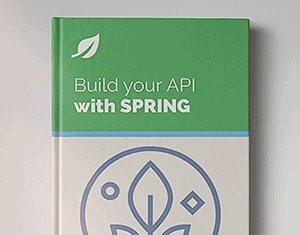1. Overview
In this quick tutorial, we’ll explore Spring’s @RequestParam annotation and its attributes.
Simply put, we can use @RequestParam to extract query parameters, form parameters, and even files from the request.
In this article, we introduce different types of @RequestMapping shortcuts for quick web development using traditional Spring MVC framework.
Learn about the differences between @Controller and @RestController annotations in Spring MVC.
2. A Simple Mapping
Let’s say that we have an endpoint /api/foos that takes a query parameter called id:
@GetMapping("/api/foos")
@ResponseBody
public String getFoos(@RequestParam String id) {
return "ID: " + id;
}
In this example, we used @RequestParam to extract the id query parameter.
A simple GET request would invoke getFoos:
http://localhost:8080/spring-mvc-basics/api/foos?id=abc
----
ID: abc
Next, let’s have a look at the annotation’s attributes: name, value, required, and defaultValue.
3. Specifying the Request Parameter Name
In the previous example, both the variable name and the parameter name are the same.
Sometimes we want these to be different, though. Or, if we aren’t using Spring Boot, we may need to do special compile-time configuration or the parameter names won’t actually be in the bytecode.
Fortunately, we can configure the @RequestParam name using the name attribute:
@PostMapping("/api/foos")
@ResponseBody
public String addFoo(@RequestParam(name = "id") String fooId, @RequestParam String name) {
return "ID: " + fooId + " Name: " + name;
}
We can also do @RequestParam(value = “id”) or just @RequestParam(“id”).
4. Optional Request Parameters
Method parameters annotated with @RequestParam are required by default.
This means that if the parameter isn’t present in the request, we’ll get an error:
GET /api/foos HTTP/1.1
-----
400 Bad Request
Required String parameter 'id' is not present
We can configure our @RequestParam to be optional, though, with the required attribute:
@GetMapping("/api/foos")
@ResponseBody
public String getFoos(@RequestParam(required = false) String id) {
return "ID: " + id;
}
In this case, both:
http://localhost:8080/spring-mvc-basics/api/foos?id=abc
----
ID: abc
and
http://localhost:8080/spring-mvc-basics/api/foos
----
ID: null
will correctly invoke the method.
When the parameter isn’t specified, the method parameter is bound to null.
4.1. Using Java 8 Optional
Alternatively, we can wrap the parameter in Optional:
@GetMapping("/api/foos")
@ResponseBody
public String getFoos(@RequestParam Optional<String> id){
return "ID: " + id.orElseGet(() -> "not provided");
}
In this case, we don’t need to specify the required attribute.
And the default value will be used if the request parameter is not provided:
http://localhost:8080/spring-mvc-basics/api/foos
----
ID: not provided
5. A Default Value for the Request Parameter
We can also set a default value to the @RequestParam by using the defaultValue attribute:
@GetMapping("/api/foos")
@ResponseBody
public String getFoos(@RequestParam(defaultValue = "test") String id) {
return "ID: " + id;
}
This is like required=false, in that the user no longer needs to supply the parameter:
http://localhost:8080/spring-mvc-basics/api/foos
----
ID: test
Although, we are still okay to provide it:
http://localhost:8080/spring-mvc-basics/api/foos?id=abc
----
ID: abc
Note that when we set the defaultValue attribute, required is indeed set to false.
6. Mapping All Parameters
We can also have multiple parameters without defining their names or count by just using a Map:
@PostMapping("/api/foos")
@ResponseBody
public String updateFoos(@RequestParam Map<String,String> allParams) {
return "Parameters are " + allParams.entrySet();
}
which will then reflect back any parameters sent:
curl -X POST -F 'name=abc' -F 'id=123' http://localhost:8080/spring-mvc-basics/api/foos
-----
Parameters are {[name=abc], [id=123]}
7. Mapping a Multi-Value Parameter
A single @RequestParam can have multiple values:
@GetMapping("/api/foos")
@ResponseBody
public String getFoos(@RequestParam List<String> id) {
return "IDs are " + id;
}
And Spring MVC will map a comma-delimited id parameter:
http://localhost:8080/spring-mvc-basics/api/foos?id=1,2,3
----
IDs are [1,2,3]
or a list of separate id parameters:
http://localhost:8080/spring-mvc-basics/api/foos?id=1&id=2
----
IDs are [1,2]
8. Conclusion
In this article, we learned how to use @RequestParam.
The code backing this article is available on GitHub. Once you're
logged in as a Baeldung Pro Member, start learning and coding on the project.
















